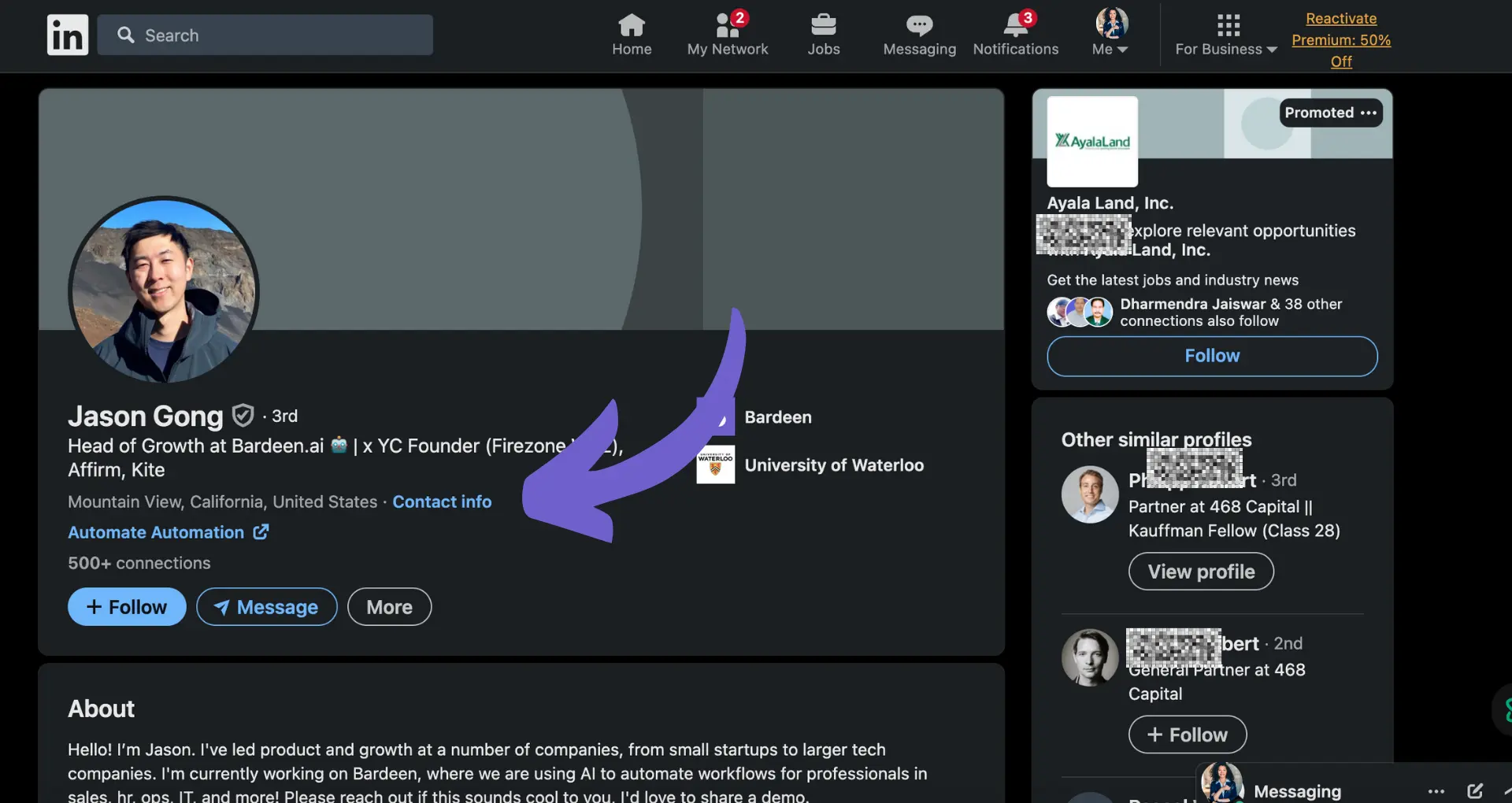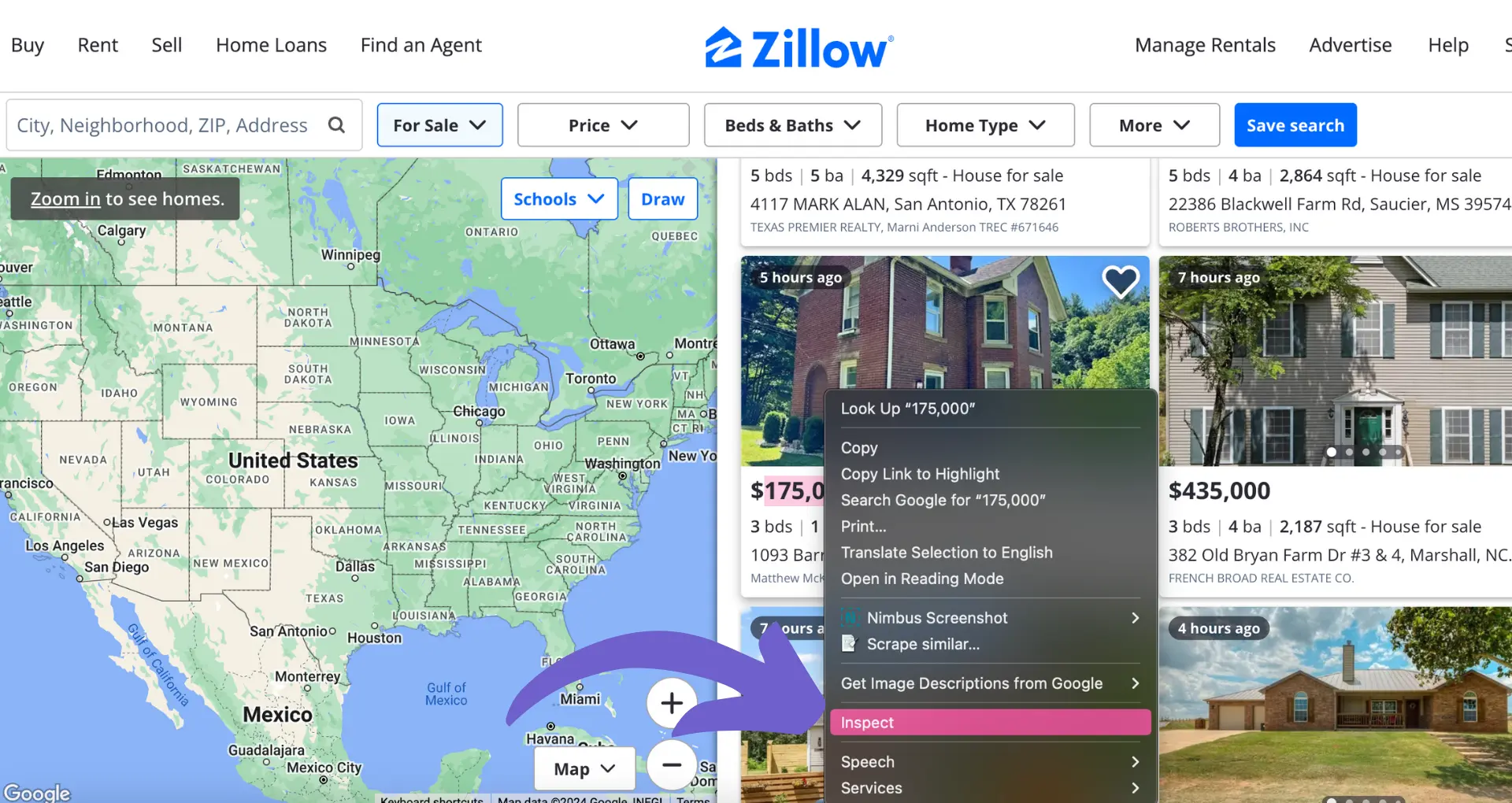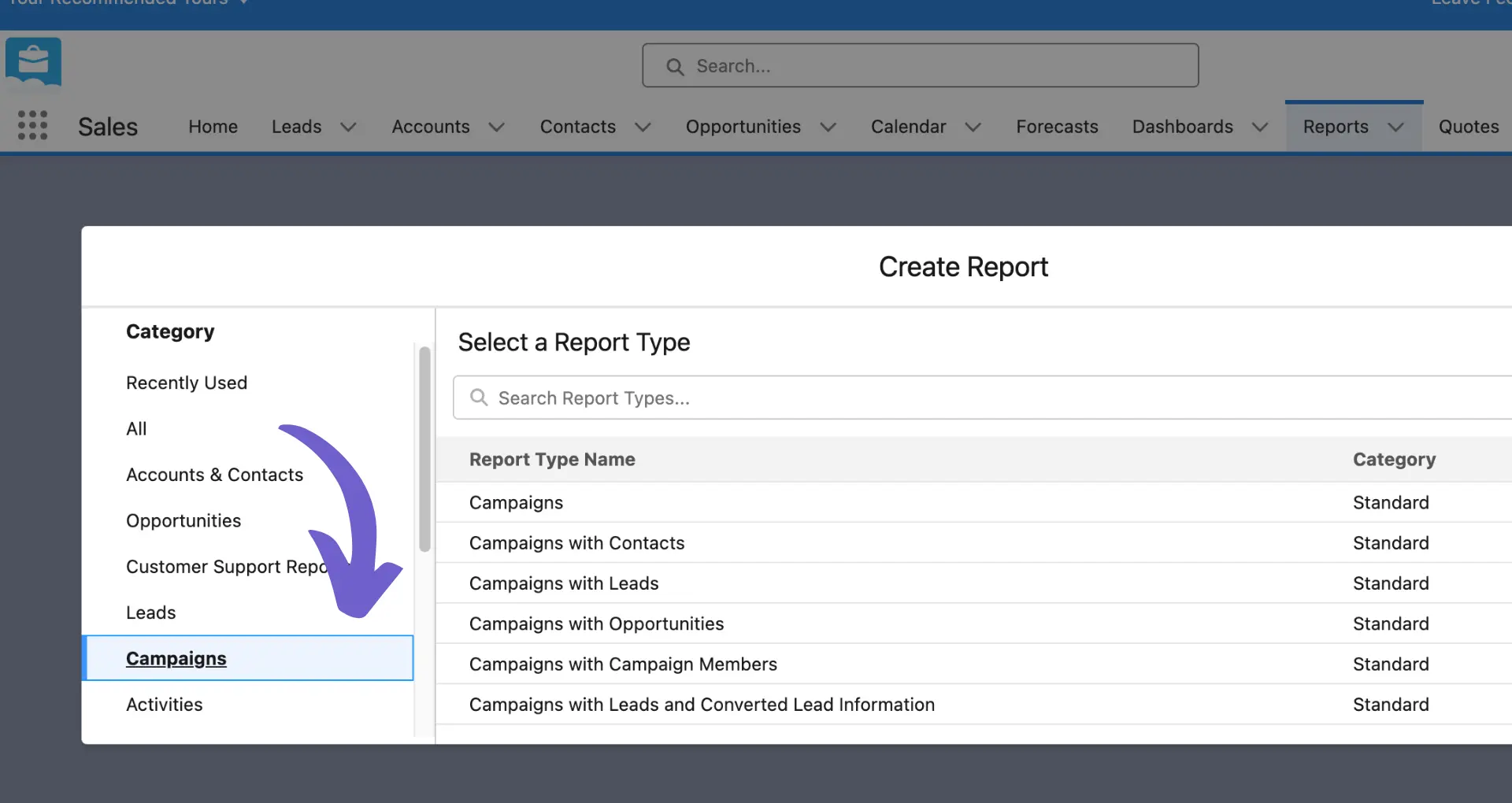





LinkedIn ads cost $2-$3 per click at the moment.
By the way, we're Bardeen, we build a free AI Agent for doing repetitive tasks.
If you're optimizing LinkedIn ads, our LinkedIn Profile Scraper can help. It automates data collection, saving time and improving targeting.
Are you curious about the cost of advertising on LinkedIn in 2024? With over 900 million users, LinkedIn offers a valuable platform for B2B and B2C brands to reach their target audience. However, LinkedIn ad costs can vary significantly based on factors like ad format, targeting, and competition.
In this comprehensive guide, we'll break down the average costs for LinkedIn ads, explain the key pricing factors, and share expert tips to optimize your ad spend. You'll learn how to launch effective campaigns whether you're spending $500 or $5,000 per month. By the end, you'll have a clear understanding of what to budget for LinkedIn advertising and how to maximize your ROI.
LinkedIn advertising costs depend on several factors, including your campaign objective, bidding strategy, target audience, and ad relevance score. On average, advertisers pay:
How much you spend is influenced by the LinkedIn ad auction. You compete with other advertisers targeting a similar audience, and the cost to win the auction depends on your bid and the desirability of your target audience.
Your LinkedIn advertising costs are determined by your bid type (CPC, CPM, CPS), campaign objective (brand awareness, engagement, lead generation, etc.), target audience, ad relevance score, and competition from other advertisers.
For example, if you target a highly sought-after audience like C-suite executives, you can expect to pay more due to increased competition. Improving your ad relevance with compelling creative and precise targeting can help lower costs.
Using tools like a LinkedIn profile scraper can streamline data gathering for better audience targeting.
In 2024, the average costs for LinkedIn ads are:
These are general benchmarks, and actual costs can vary significantly based on the factors mentioned above. Some advertisers may pay over $10 per click or $50 per 1000 impressions for highly competitive audiences.
The LinkedIn ads auction determines the price you pay for your ads. When you launch a campaign, you place a bid for your desired action, such as clicks or impressions.
Your bid then competes with other advertisers who want to reach the same target audience. The winner of the auction is generally the advertiser with the highest combination of bid and ad relevance score.
Therefore, having a high enough bid to compete and creating relevant, engaging ads are both key to managing your LinkedIn advertising costs.
In summary, LinkedIn advertising costs are influenced by multiple factors, with the average cost-per-click being $2 - $3 and the average cost per 1000 impressions falling between $5 - $8 in 2024. In the next section, we'll dive into LinkedIn ad formats and pricing models to further your understanding of how LinkedIn advertising works.
For more insights, check out how to build a prospect list to target your ads effectively.
LinkedIn offers several ad formats to help you achieve your marketing goals. The main formats are Sponsored Content, Sponsored Messaging, Text Ads, and Dynamic Ads. Each has unique characteristics:
The pricing model and costs vary by ad format. It's important to align your format and bidding choices with your campaign objectives and budget.
Sponsored Content ads appear natively in the LinkedIn feed across desktop and mobile. Single image, video, carousel, and event ad options are available. Sponsored Messaging includes Message Ads and Conversation Ads delivered directly to your audience's LinkedIn messaging inbox.
Text Ads are simple pay-per-click ads that appear in the right rail on desktop. Dynamic Ads offer profile-based personalization and allow you to promote your content, company, or job opportunities. Understanding the strengths of each format is key to selecting the right one for your goals.
LinkedIn uses an auction system for ad pricing. You'll pay per click (CPC), per 1000 impressions (CPM), or per send (CPS) depending on your ad format:
Typical CPC costs are $2 - $7, CPM averages $6.59, and CPS ranges from $0.10 - $0.45. Your actual costs will depend on your targeting, competition, and ad relevance. More competitive audiences and lower relevance scores can drive up your prices.
Each LinkedIn ad format has its own strengths. Sponsored Content is great for building brand awareness and engagement. Sponsored Messaging allows you to drive conversions with targeted product or content offers.
Text Ads work well for direct response campaigns on a limited budget. Dynamic Ads offer a personalized touch to help grow your follower base or drive job applications. Select your format based on your marketing objectives, target audience, and budget.
LinkedIn's different ad formats and pricing models give you the flexibility to achieve a variety of marketing goals. By understanding how costs are determined and the best use cases for each format, you can launch campaigns that deliver strong ROI. Next, we'll dive into the key factors that impact your LinkedIn advertising costs.
Want to automate your LinkedIn tasks and save valuable time? Use Bardeen's LinkedIn Profile Scraper to collect data effortlessly and enhance your marketing strategy.
Several key factors influence how much it costs to advertise on LinkedIn in 2024. Your target audience, ad relevance, and bidding strategy can significantly impact your LinkedIn advertising costs.
For example, a B2B software company targeting IT decision-makers at enterprise companies will likely have higher costs than a retailer targeting a broader consumer audience due to the competition for that valuable B2B audience. Lead enrichment also plays a big role - ads with higher engagement and relevance scores can earn better placement at lower costs.
The audience you target on LinkedIn directly impacts your advertising costs. If you go after a popular audience segment that other advertisers are also targeting heavily, you can expect to pay more due to the increased competition.
For instance, targeting an audience of C-suite executives will likely cost more than a broader audience of entry-level employees. That's because many B2B advertisers are competing for that high-value executive audience. Evaluate your audience targeting carefully to find the right balance of reach and cost.
LinkedIn assigns a relevance score to each ad based on expected engagement rates and user feedback. Ads with higher relevance scores are rewarded with better placement in the auction and lower costs.
To improve your relevance scores, focus on creating engaging ad content that resonates with your target audience. Test different ad formats, copy, and creative to optimize for engagement metrics like click-through rates. Higher engagement not only boosts relevance but also indicates you're reaching the right people.
Your bidding strategy and campaign settings have a big influence on LinkedIn ad costs. LinkedIn offers automated and manual bidding options. Automated bidding uses machine learning to optimize your bids for your stated objective, like automating sales prospecting.
Manual bidding gives you full control but requires more hands-on management. You also need to decide on a campaign budget and pacing. Setting a higher budget allows LinkedIn to spend more to achieve your goals. Accelerated pacing spends budget faster, while standard pacing spreads it more evenly.
LinkedIn ad costs are driven by a combination of your targeting, ad relevance, and bidding choices. By carefully selecting your audience, creating high-quality ads, and optimizing your bids, you can maximize the return on your LinkedIn ad spend.
Next up, we'll cover actionable tips you can use to lower your LinkedIn advertising costs while still driving great results for your campaigns. Don't miss these money-saving strategies!
To get the most out of your LinkedIn advertising budget, you need a solid optimization strategy. By improving ad relevance, refining audience targeting, and adjusting bids, you can significantly reduce your LinkedIn advertising costs while still achieving your marketing goals.
For example, a SaaS company reduced their cost per lead by 30% by implementing these techniques. They A/B tested ad creative to boost relevance scores, combined profile and interest targeting to reach their ideal audience, and used automated bidding to optimize for conversions.
One of the best ways to improve your LinkedIn ad relevance scores is through A/B testing. Create multiple versions of your ads with different headlines, images, copy, and CTAs. Then, run them head-to-head to see which performs best.
Keep the winning elements and test again. Through repeated testing, you can hone in on the perfect ad creative that resonates with your audience and drives high engagement. Better relevance scores translate to lower costs.
Save time and improve ad targeting. Explore Bardeen's powerful sales prospecting automation tools to supercharge your LinkedIn strategy.
Reaching the right audience is critical for LinkedIn ads success. Start with LinkedIn's professional targeting options like job title, industry, and skills. Then, layer on interest targeting to reach prospects with relevant interests.
Use exclusions to remove less desirable audiences, like existing customers or competitors. Regularly analyze your audience performance and make adjustments. By continually refining your targeting, you can improve results and reduce wasted spend.
Bidding optimization is another powerful way to reduce LinkedIn ad costs. Set realistic maximum bids based on your campaign goals and target cost per acquisition. Use bid automation tools to adjust bids in real-time based on performance.
Monitor your campaigns regularly and adjust bids as needed. If a campaign is performing well, increase bids to get more volume. If costs are too high, reduce bids or pause underperforming elements. By proactively managing bids, you can keep costs down while scaling results.
Improving relevance, targeting, and bids are the three pillars of LinkedIn ads optimization. By implementing these strategies, you can dramatically lower your advertising costs on LinkedIn while driving better business results.
Thanks for sticking with us this far! By now, you're well on your way to becoming a LinkedIn ads pro. Just don't forget to put these techniques into practice, or you might find yourself overpaying for underperforming ads!
Understanding the costs to advertise on LinkedIn in 2024 is crucial for effective B2B marketing budgeting and planning. For a deeper look, consider exploring automate sales prospecting tools which can further enhance your campaign strategies.
This guide covered:
By mastering these concepts, you can create cost-effective LinkedIn ad campaigns that deliver powerful results. Don't let your LinkedIn ad budget go to waste - put these insights into action!










SOC 2 Type II, GDPR and CASA Tier 2 and 3 certified — so you can automate with confidence at any scale.
Bardeen is an automation and workflow platform designed to help GTM teams eliminate manual tasks and streamline processes. It connects and integrates with your favorite tools, enabling you to automate repetitive workflows, manage data across systems, and enhance collaboration.
Bardeen acts as a bridge to enhance and automate workflows. It can reduce your reliance on tools focused on data entry and CRM updating, lead generation and outreach, reporting and analytics, and communication and follow-ups.
Bardeen is ideal for GTM teams across various roles including Sales (SDRs, AEs), Customer Success (CSMs), Revenue Operations, Sales Engineering, and Sales Leadership.
Bardeen integrates broadly with CRMs, communication platforms, lead generation tools, project and task management tools, and customer success tools. These integrations connect workflows and ensure data flows smoothly across systems.
Bardeen supports a wide variety of use cases across different teams, such as:
Sales: Automating lead discovery, enrichment and outreach sequences. Tracking account activity and nurturing target accounts.
Customer Success: Preparing for customer meetings, analyzing engagement metrics, and managing renewals.
Revenue Operations: Monitoring lead status, ensuring data accuracy, and generating detailed activity summaries.
Sales Leadership: Creating competitive analysis reports, monitoring pipeline health, and generating daily/weekly team performance summaries.